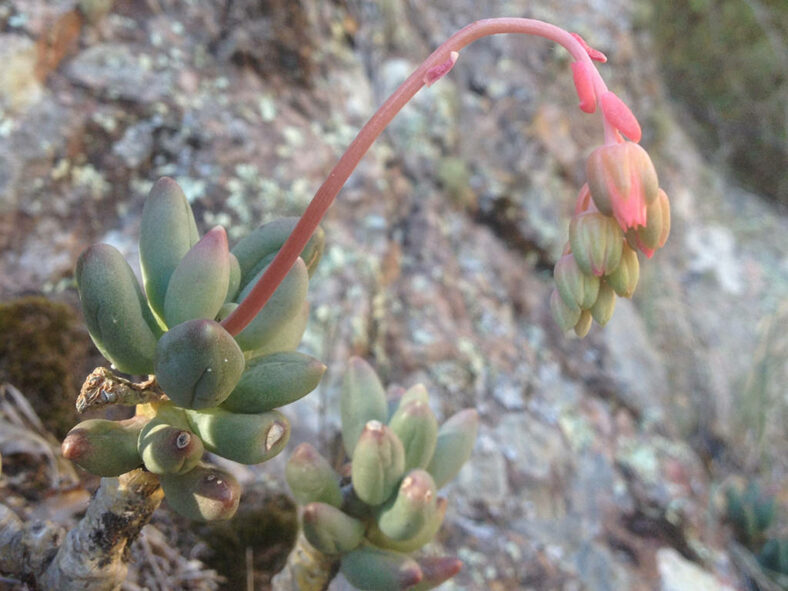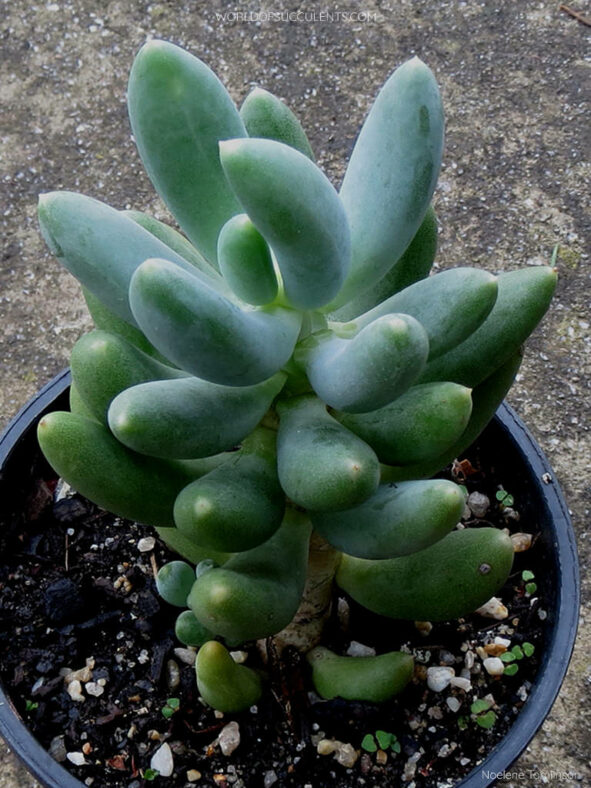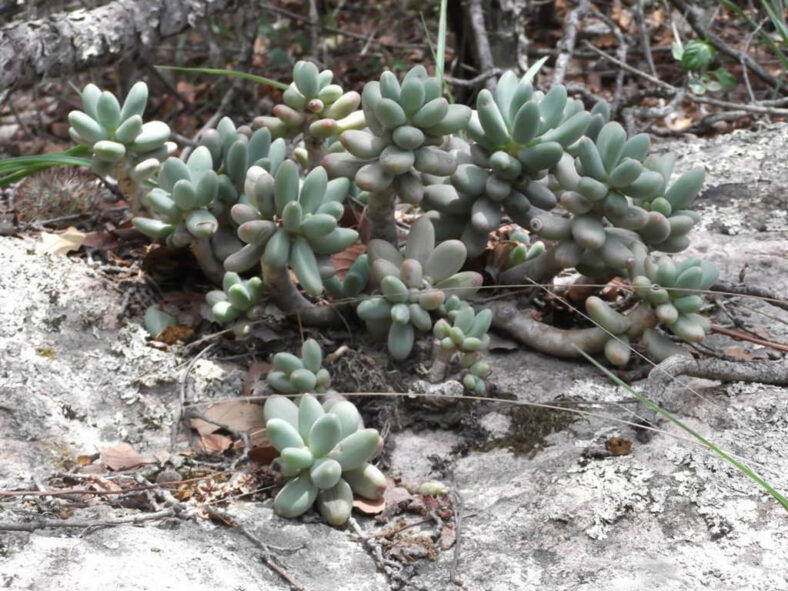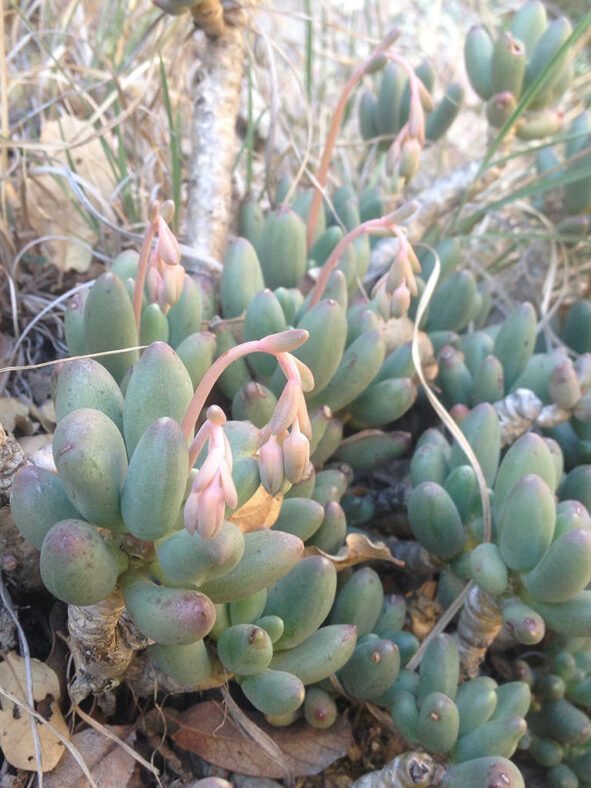Scientific Name
Pachyphytum hookeri (Salm-Dyck) A.Berger
Synonym(s)
Diotostemon hookeri, Echeveria hookeri, Pachyphytum roseum
Scientific Classification
Family: Crassulaceae
Subfamily: Sedoideae
Tribe: Sedeae
Subtribe: Sedinae
Genus: Pachyphytum
Etymology
The specific epithet "hookeri (pronounced HOOK-er-ee)" honors Sir William Jackson Hooker (1785-1865), an English botanist and botanical illustrator who was the first director of the Royal Botanic Gardens.
Origin
Pachyphytum hookeri is native to Mexico. It grows on rock cliffs from San Luis Potosi, through Aguascalientes and Guanajuato to Jalisco at elevations between 6,560 and 8,200 feet (2,000 and 2,500 m).
Description
Pachyphytum hookeri is a small succulent with spindle-shaped leaves at first clustered in rosettes, later more or less distant, and only in the uppermost part of the stems. It can reach a height of 12 inches (30 cm). The stems are erect, decumbent, or pendent and can grow up to 25 inches (50 cm) long and 0.7 inches (1.7 cm) in diameter. The leaves are green, glaucous, or sometimes reddish. They can measure up to 2 inches (5 cm) long, up to 0.7 inches (1.8 cm) wide, and 0.15 inches (1.1 cm) thick.
The flowers are tubular to bell-shaped, with rose-colored to red or green-tipped sepals and rose-colored or yellowish petals. They can reach a length of 0.35 inches (0.9 cm). In spring, the flowers appear on arching, rose-colored to red stalks that can grow up to 14 inches (35 cm) long.

How to Grow and Care for Pachyphytum hookeri
Light: P. hookeri thrives in direct sunlight. It will also grow in partial shade but with slightly rangy results. Therefore, keep it near a sunny window when growing it as a houseplant.
Soil: The plant needs good drainage to maintain a healthy root system. When growing P. hookeri in a container, choose a well-drained soil mix and a container with drainage holes.
Temperature: This plant will do well in hot weather, but its most active growth will occur in spring and fall. P. hookeri can withstand temperatures as low as 30 °F (-1.1 °C). USDA Plant Hardiness Zones 10a to 11b, 30 to 50 °F (-1.1 to 10 °C).
Watering: In spring and fall, water the plant thoroughly, then allow the soil to dry out before watering again. Water more sparingly in winter. The plant does not need to be watered during its summer dormancy except in arid conditions.
Fertilizing: Apply fertilizer to promote healthy growth, including flower production. Fertilize only during the growing season. A water-soluble fertilizer diluted to half the recommended strength is suitable and commonly used.
Repotting: P. hookeri does not need frequent repotting. However, when it outgrows its pot, repotting it in a new container with a fresh potting mix will encourage new growth. Repot in a pot slightly larger than the old one. Give the plant a week or so to readjust before you water it.
Propagation: The easiest way to propagate P. hookeri is through stem cuttings. It is also easily propagated from leaves and seeds. Even a leaf that drops off will root below the parent plant and produce a new plant. Take cuttings in spring. The best time to sow the seeds is in spring and summer.
Learn more at How to Grow and Care for Pachyphytum.
Toxicity of Pachyphytum hookeri
P. hookeri is generally non-toxic to humans and pets.
Hybrids of Pachyphytum hookeri
Links
- Back to genus Pachyphytum
- Succupedia: Browse succulents by Scientific Name, Common Name, Genus, Family, USDA Hardiness Zone, Origin, or cacti by Genus
Photo Gallery
Click on a photo to see a larger version.


